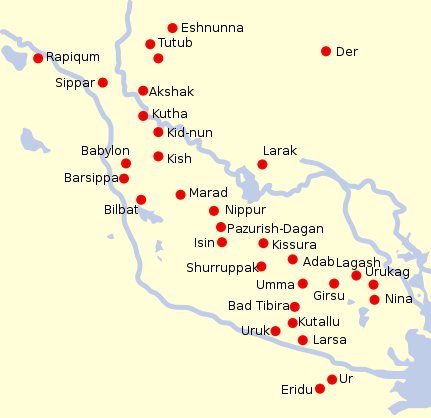In the Arab structure the last day with the Bharani fraction
(.4) coincided with day 161 counted from Delta (δ
Andromedae):

|
Delta
(→ 4) |
δ Andromedae |
8.4 |
March 29 (88) |
0 |
|
|
1 |
Al Sharatain |
Pair of Signs |
β Arietis (Sheratan), γ (Mesarthim) |
27.4 |
April 17 (107) |
19 |
|
|
Musca
Borealis |
35 (Head of the Fly), 39 (Kaffaljidhma), and
41 Arietis (Bharani) |
41.4 |
May 1 (121) |
33 |
0 |
|
2 |
Al Dabarān |
Follower |
α Tauri (Aldebaran), θ¹, θ²´,
γ (Hyadum I), δ (Hyadum II), ε (Ain) |
63.4 |
May 23 (143) |
55 |
22 |
|
3 |
Al Hak'ah |
White Spot |
λ
Orionis (Heka),
φ¹,
φ² |
83.4 |
June 12 (163) |
75 |
42 |
|
4 |
Al Han'ah |
Brand |
γ Gemini (Alhena), μ (Tejat Posterior), ν,
η (Tejat Prior),
ξ (Alzirr) |
93.4 |
June 22 (173) |
85 |
52 |
|
5 |
Al Dhirā' |
Forearm |
α Gemini (Castor), β (Pollux) |
113.4 |
July 12 (193) |
105 |
72 |
|
6 |
Al Nathrah |
Gap |
ε Cancri (Beehive) |
130.4 |
July 29 (210) |
123 |
90 |
|
7 |
Al Tarf |
End |
ξ
Cancri,
λ
Leonis (Alterf) |
143.4 |
Aug 11 (223) |
135 |
102 |
|
8 |
Al Jabhah |
Forehead |
η Leonis (Al Jabhah),
α (Regulus), ζ (Adhafera), γ (Algieba) |
152.4 |
Aug 20 (232) |
144 |
111 |
|
9 |
Al Zubrah |
Mane |
δ Leonis (Zosma), θ (Coxa) |
169.4 |
Sept 6 (249) |
161 |
128 |
|
10 |
Al Sarfah |
Turn |
β Leonis (Denebola) |
178.3 |
Sept 15 (258) |
170 |
137 |
|
11 |
Al Áwwā' |
Barker |
β (Alaraph), η (Zaniah),
γ (Porrima),
δ (Minelauva), ε Virginis (Vindemiatrix) |
191.5 |
Sept 28 (271) |
183 |
150 |
| te ika |
te honu |
 |
 |
| Ca1-7 |
Ca1-8 |
| α Muscae (190.2), τ Centauri (190.5), χ Virginis (190.7)
ALDERAMIN (α Cephei)
|
Al Áwwā'-11 (The Barker) / Shur-mahrū-shirū-18 (Front or West Shur)
SOMBRERO GALAXY = M104 Virginis (191.1), ρ Virginis (191.4), PORRIMA = γ Virginis, γ Centauri (191.5)
*150.0 = *191.4 - *41.4 |
|
ANDROMEDA GALAXY (M31), π Andromedae (7.7) |
ε Andromedae (8.2), DELTA = δ Andromedae (8.4), SCHEDIR (Breast) = α Cassiopeiae (8.6), ζ Andromedae, μ Phoenicis (8.9)
*150.0 + *183.0 = *333.0 = *8.4 - *41.4 + *366.0 |

161 → 10 June as in the
shadowing hat ('sombrero') of the Mad Hatter
Counted from 0h (March 21) day 161 was August 29,
corresponding to day 177 (= 6 * 29½ = 161 + 16) counted from
JANUARY 1:
|
ST
JOHN'S DAY |
JUNE 25 |
26
(177 = 6 * 29½) |
27 |
 |
 |
 |
 |
|
Ga4-12 (95) |
Ga4-13 → 14 * 29½ |
Ga4-14 |
Ga4-15 |
|
CLOSE TO THE SUN: |
|
p Carinae (159.3) |
φ Hydrae
(160.3) |
no
star listed (161) |
VATHORZ POSTERIOR = θ Carinae
(162.1),
PEREGRINI = μ Velorum,
η Carinae
(162.6) |
|
Aug
27 |
28
(240 = 8 * 30) |
29
(*161) |
30 |
|
°Aug
23 |
24
(236 = 8 * 29½) |
25 (*157) |
26 |
|
'July 31 |
'Aug
1 |
2
(214) |
3
(*500) |
|
"July 17 |
Te Anakena 18 |
19
(200) |
20
(*121) |
|
DAY
159 |
160 |
161
(= 7 * 23) |
162 |
|
... This [η
Carinae] is one of the most noted objects in the
heavens, perhaps even so in almost prehistoric
times, for Babylonian inscriptions seem to refer
to a star noticeable from occasional faintness
in its light, that Jensen thinks was η.
And he claims it as one of the temple stars
associated with Ea, or Ia, of Eridhu¹, the Lord
of Waters, otherwise known as Oannes², the
mysterious human fish and greatest god of the
kingdom.
¹ Eridhu, or Eri-duga, the
Holy City, Nunki, or Nunpe, one of the oldest
cities in the world, even in ancient Babylonia,
was that kingdom's flourishing port on the
Persian Gulf, but, by the encroachment of the
delta, its site is now one hundred miles inland.
In its vicinity the Babylonians located their
sacred Tree of Life.
² Berōssōs described Oannes
as the teacher of early man in all knowledge;
and in mythology he was even the creator of man
and the father of Tammuz and Ishtar, themselves
associated with other stars and sky figures.
Jensen thinks Oannes connected with the stars of
Capricorn; Lockyer finds his counterpart in the
god Chnemu of Southern Egypt; and some have
regarded him as the prototype of Noah ...
 |
|
CLOSE TO THE
FULL MOON: |
|
CHRISTMAS EVE |
DEC 25 |
26
(360) |
27 |
|
η Aquarii (342.1), σ Gruis (342.4),
SITULA
(Water-jar) = κ Aquarii
(342.7)
*301.0 = *342.4 - *41.4 |
ε Piscis Austrini (343.5), ο Pegasi, β Gruis
(343.8) |
ρ Gruis (344.0),
MATAR (Rain) = η Pegasi
(344.2), η Gruis (344.6), β Oct. (344.7) |
λ Pegasi (345.0), ξ Pegasi (345.1), ε Gruis
(345.3), τ Aquarii (345.7), ξ Oct. (345.8), μ
Pegasi (345.9) |
|
Febr
26 |
27
(58) |
28
(424) |
March 1 (*345) |
|
°Febr 22 |
TERMINALIA |
24
(55) |
25 |
|
'Jan
30 (*315) |
31 |
'Febr 1 (32) |
2 |
|
"Jan
16 (*301) |
17 |
18 (383) |
19 |
|
DAY
342 |
343
(= 7 * 7 * 7) |
344 |
345 |
 |
The beginning of Hanga Hoonu (the needfire
season) was in "July 18 (Te Anakena 18) which
corresponded to DAY 160.
|
"July 10 (191) |
6 |
"July 18
(199) |
4 |
"July 23 (204) |
"July 24 (205) |
26 |
"August 20 (232) |
|
Te Anakena 10 |
Te Anakena 18 |
Te
Anakena 23 |
Te Anakena 24 |
Hora
Iti 20 |
|
Hanga
Takaure |
Hanga
Hoonu |
Rangi
Meamea |
Oromanga |
Papa
O Pea |
However, an astronomically more correct day for the northern spring
equinox was March 20 (79) and DAY 160 could therefore be more
correctly stated as DAY 161.
... Ecclesiastically, the equinox is reckoned
to be on 21 March (even though the equinox occurs,
astronomically speaking, on 20 March in most years) ...
... The month, which takes its name from
Juppiter the oak-god, begins on June 10th and ends of July 7th.
Midway comes St. John's Day, June 24th, the day on which the
oak-king was sacrificially burned alive. The Celtic year was
divided into two halves with the second half beginning in July,
apparently after a seven-day wake, or funeral feast, in the
oak-king's honour ...
At the opposite side of the fire in the Day of St John was the
Water-jar:
... The evening of 23 June, St. John's Eve,
is the eve of celebration before the Feast Day of Saint John the
Baptist. The Gospel of Luke (Luke 1:36, 56-57) states that John
was born about six months before Jesus; therefore, the feast of
John the Baptist was fixed on 24 June, six months before
Christmas Eve ...

|








